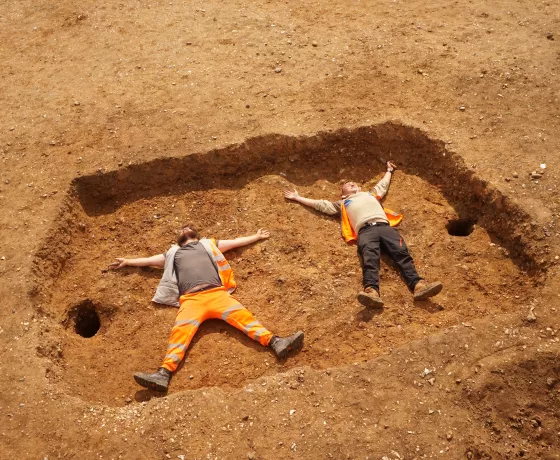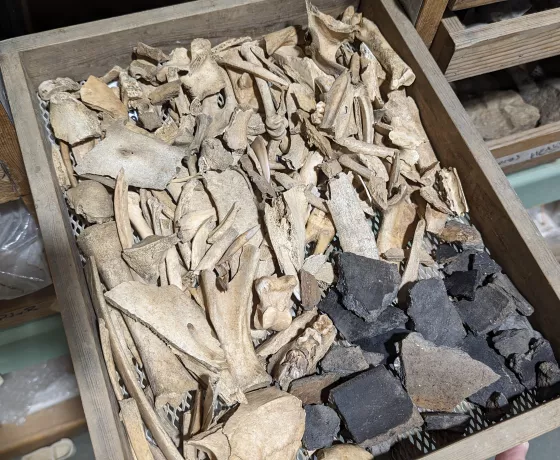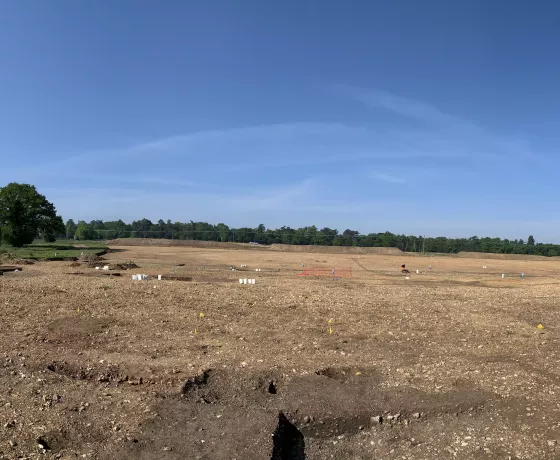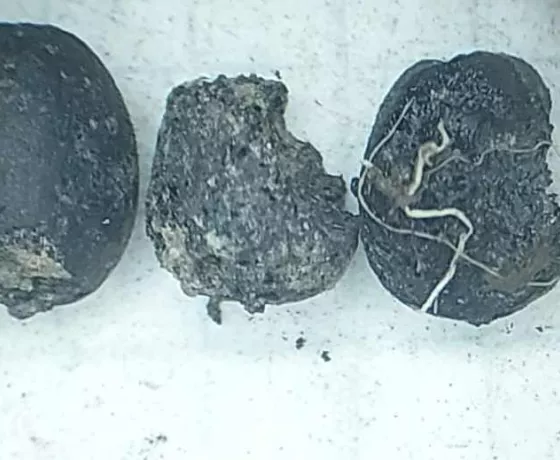Carrying on from last week's environmental archaeology post, another member of our environmental archaeology team, Martha, is here to tell us a few more things about what we’re finding on site, and what it all means.
Archaeobotany, simply put, is the study of plant remains recovered from archaeological sites. When we say plant remains this commonly consists of seeds and charcoal but can also include a wide array of material include pollen, leaf impressions on pottery and fragments of burnt food crusts. Archaeobotanical material is typically recovered from soil samples that we take from site and is usually preserved in one of three ways:
- Carbonisation: burnt material often from ovens, hearths etc;
- Waterlogging: often in wells and other deep features where the water-table is high;
- Mineralisation: think rubbish pits, drains and lavatories –very smelly!
Plant material can also be preserved through desiccation (really hot and dry environments e.g. Egyptian tombs) and freezing conditions (e.g. Ötzi the iceman) but the UK doesn’t tend to get this kind of weather sadly.
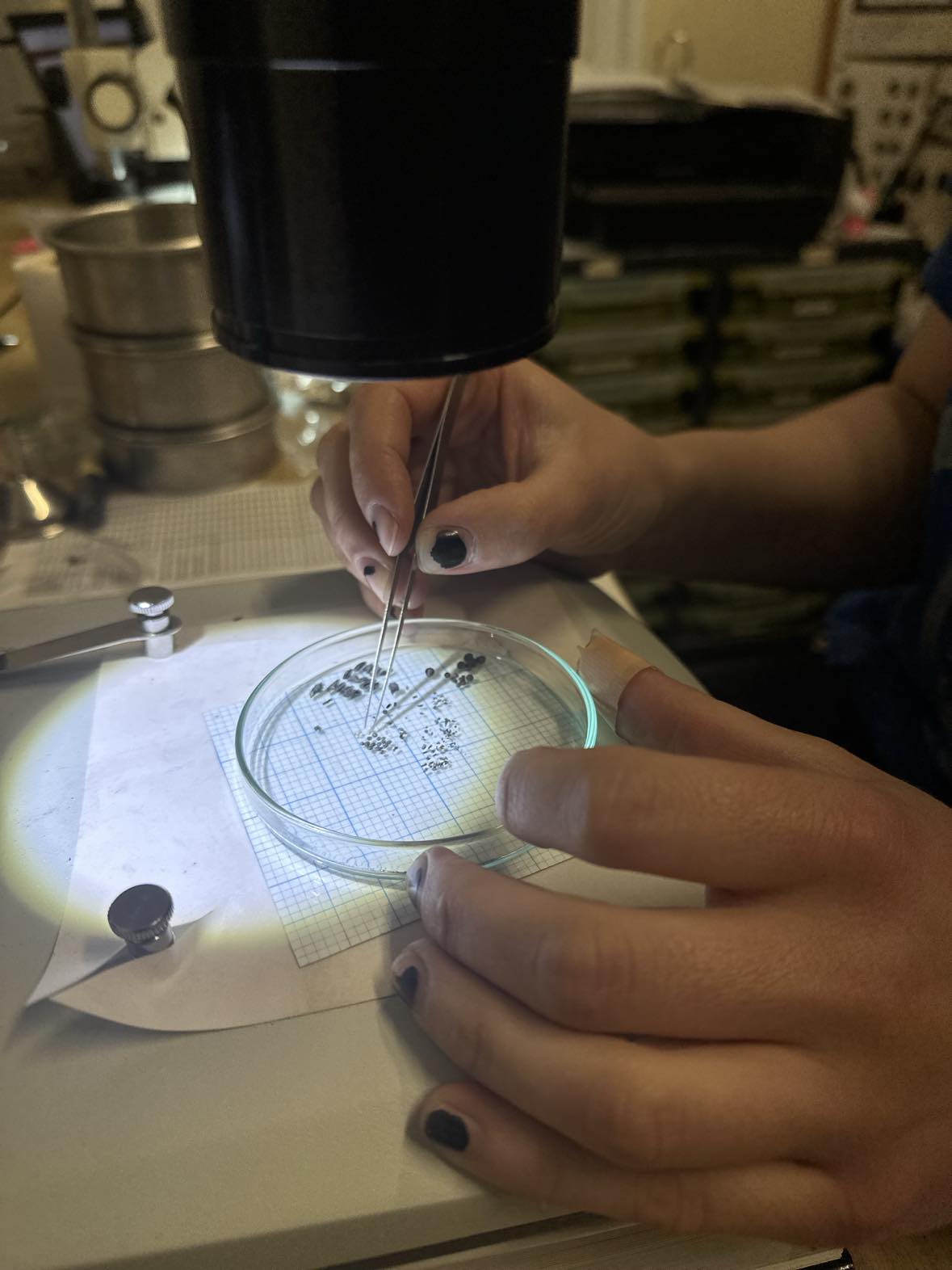
Grains being sorted under a microscope.
In order to look at the archaeobotanical material we must use a microscope, this is because most of the plant remains are too small for us to properly look at them using just our eyes. Studying these remains can tell us a lot about an archaeological site, as the natural world and the way that humans interact with it is a core part of our history and our present. Archaeobotany can help us to learn about what people ate, what they wore, their status, how they farmed, what the environment used to look like, and so much more. What do you think your lunch might tell us about you if we were to look at it?
So far at Abbot’s Vale we have examined a small snapshot of the material, but this has already provided us with some interesting insights into the lives of those who inhabited the site.
A number of the presumed Anglo-Saxon contexts contain burnt cereal grains and based on their shape we can tell that the inhabitants were mainly growing and eating free-threshing wheat and barley. In the Anglo-Saxon period these were the most common cereal types cultivated in this region, so the inhabitants of this site were very on trend! The recovery of both barley and wheat grains within the features could possibly indicate that the occupants were growing several crops as a maslin (maslin meaning mixture of grain types). It is thought that people in this period often grew multiple crops together as a means of food security in case one crop failed due to disease or drought. Ensuring that you had a good crop was often a matter of life and death for the people of this period – aren’t we lucky to be able to just go out to the shops instead of having to grow our own food?
The early medieval period is an interesting time where we start to see a change in the type of wheat grown. From mainly spelt and emmer (hulled varieties) to free-threshing wheat, including bread wheat. Several reasons have been put forward for this alteration, including that bread wheat is the only wheat that produces fluffy white loaves. Speaking of baking…one of the most productive features we have investigated so far is an oven-type structure uncovered in the southern section of the site. It is possible that the grains may have been scattered onto the oven to prevent bread from sticking to its surface or perhaps as a method of testing the temperature of the oven. Bread is thought to have been a key part of the Anglo-Saxon diet so much so that the Old English word for lord originates from the term ‘hlafweard’ meaning loaf-guardian.
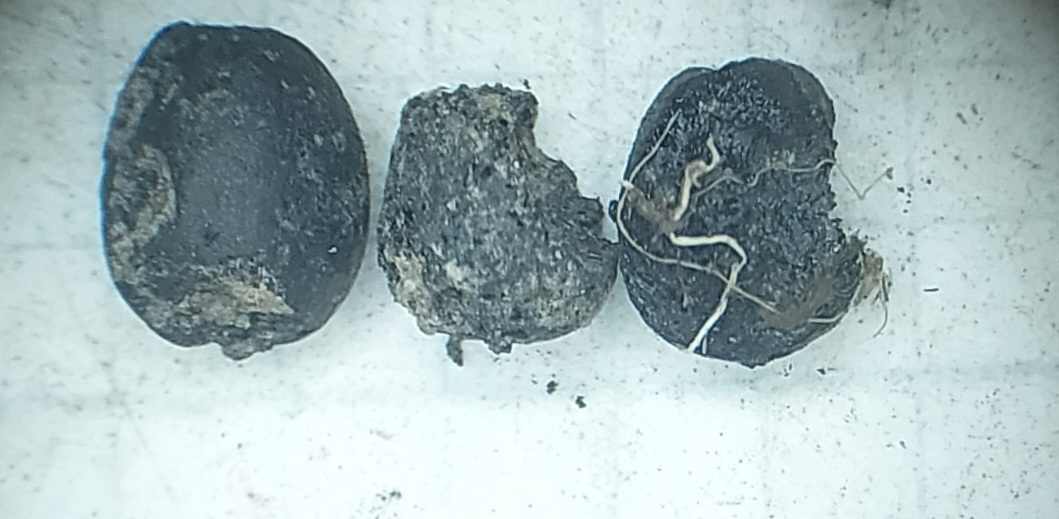
Free-threshing wheat grains from one of the ovens on site.
Alongside cereals it appears that the people of Abbot’s Vale may have been collecting wild foods to boost their diets. We know this because we have found a number of burnt hazelnut shell fragments within the samples. Unfortunately, as yet, we have no evidence of rare or exotic foodstuffs which is a great shame as Anglo-Saxons were, on occasion, thought to have flavoured their food with herbs like dill. But there’s still plenty of time to find that!
Other posts in this collection
Read our latest posts about the investigations at Abbot's Vale.


